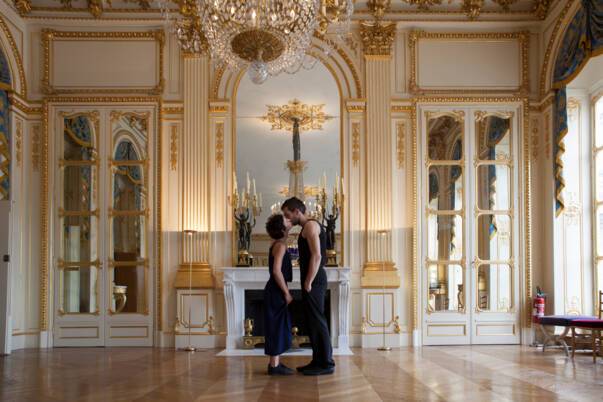Audrey Azoulay, Minister of Culture and Communication, announced Monday, June 6, a strengthening of support mechanisms for the dance and circus arts sectors in France.
For nearly thirty years, the State has been supporting these two sectors and promoting their development in consultation with local authorities. Throughout France, production and dissemination tools specific to each of these arts have been created. This effervescence has been fuelled by a structuring of higher education curricula that has spawned new generations.
The Minister wishes to strengthen the place of dance and circus artists in France, especially younger ones, by promoting the meeting between their projects and the widest audiences and supporting their international reach.
The Minister of Culture and Communication’s announcements in support of dance and the circus aim to:
- strengthen creation by supporting artistic independenceIn 2016, new measures are being taken to better support artistic creation and independence through support for companies, artist residencies and workshops in artistic factories.For dance, the aid scheme for companies under contract is revalued in 2016, mobilizing more than €600,000 in credits. In addition, a new aid to «companies with national and international influence» allows from 2016, to support significantly 12 artistic teams: Maguy Marin, Carolyn Carlson, Jean-Claude Gallotta, François Chaignaud/Cécilia Bengolea, Gisèle Vienne, Anne NGuyen Jérôme Bel, Philippe Decouflé, François Verret, Emmanuelle Huynh, Maud Le Pladec and finally Arcosm, co-directed by Thomas Guerry and Camille Rocailleux who create for young audiences.As far as the circus is concerned, the new support system for companies with a national or international reach will allow five companies to receive strong support from 2016: Le cirque Plume, the collective XY, Phia Ménard, Mathurin Bolze, Les Colporteurs. Several other companies will also see their subsidies reassessed.
- better anchor the presence of artists in all territoriesIn 2016, for dance, 8 National Choreographic Centres (NCCs) and 11 Choreographic Development Centres (CDCs) will have new means to welcome an associate artist, who will find partners to co-produce, disseminate its repertoire and accompany its meeting with audiences.In addition, the studio reception, a device that allows sharing of workspaces available to CCN and CDC, is revalued, in order to expand the possibilities of hosting independent companies.To increase the number of workspaces, especially in rural areas, 8 artistic workshops for dance and 3 for circus have been identified and will be supported. These shared places are points of support for research and daily work, often places of meetings and transmission, essential for the young generation of artists.
- strengthen the diffusion of circus and danceThe National Centres of Circus Arts (PNAC), which actively participate in production and distribution in the sector, are the subject of consolidation measures in 2016 and expanded if possible in 2017.
The circus is nomadic in essence, so to better support its distribution, the current circus roaming grants are strengthened in 2016.But roaming is sometimes slowed down, for lack of locations because it is sometimes difficult to set up a tent in the heart of cities, this difficulty is currently crucial for family circuses. The Charter for the Reception of Marquees, which is the subject of consultation with local and regional authorities, is an essential tool in this regard. With regard to family circuses, a reflection is also under way to consider an interdepartmental mission to deal with these issues, but also other subjects that go beyond the scope of the Ministry of Culture alone.In 2017, for dance, efforts will focus on the conventioned stages and dedicated festivals that provide important support for creation, international dissemination and the expansion of audiences.
- give young artists their place and strengthen our training coursesHigher education schools make France an enviable place everywhere for training and especially for circus artists worldwide. The CNAC, Centre National des arts du cirque de Châlons-en-Champagne, is the flagship, in connection with the National School of Circus Arts of Rosny-Sous-Bois, as well as the Fratellini Academy. The study of the empowerment of Lido in Toulouse is part of this approach.Similarly, questions of occupational integration must be considered at European level. Young talent Cirque Europe, now «Circus Next», benefits from a European fund for the emergence of a European circus policy. In addition, the proposed consolidation of the Hors-Les-Murs resource centre with the National Theatre Centre in ArtCena will help to strengthen intervention capacities for the sector, the pooling of resources and international cooperation.
A total of €2.64 million in new measures for the choreographic sector were announced. The circus will receive €665,000 in new funding in 2016 for companies and it is planned to better support the national centres of circus arts in 2017.
The freedom of creation and dissemination affirmed by the law on the freedom of creation, architecture and heritage that will be adopted this year, is thus strengthened by new means for these two artistic fields that “invite” other arts. Some artists are taking the plunge, from circus to dance and dance to circus.

